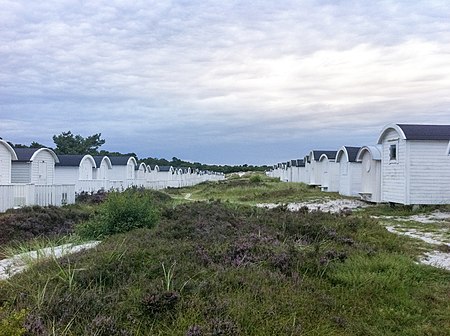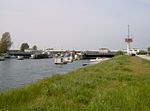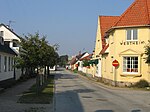Ljunghusen
Cities and towns in the Øresund RegionPopulated places in Skåne CountyPopulated places in Vellinge Municipality

Ljunghusen is a locality situated in Vellinge Municipality, Skåne County, Sweden with 2,555 inhabitants in 2010. It is located west of Höllviken and east of Skanör-Falsterbo. The town is notable for its beaches and for its golf course, Ljunghusens GK, which on several occasions has been ranked among Sweden's five best courses. Ljunghusen had a train station between 1904 and 1971, and between 1905 and 1924 a horsetrack went from the train station in the north of the village to the beach in the south.
Excerpt from the Wikipedia article Ljunghusen (License: CC BY-SA 3.0, Authors, Images).Ljunghusen
Solbacksvägen, Vellinge kommun
Geographical coordinates (GPS) Address Nearby Places Show on map
Geographical coordinates (GPS)
| Latitude | Longitude |
|---|---|
| N 55.4 ° | E 12.916666666667 ° |
Address
Solbacksvägen 13
236 42 Vellinge kommun
Sweden
Open on Google Maps








